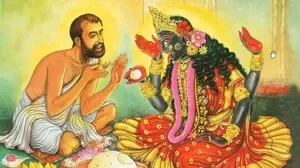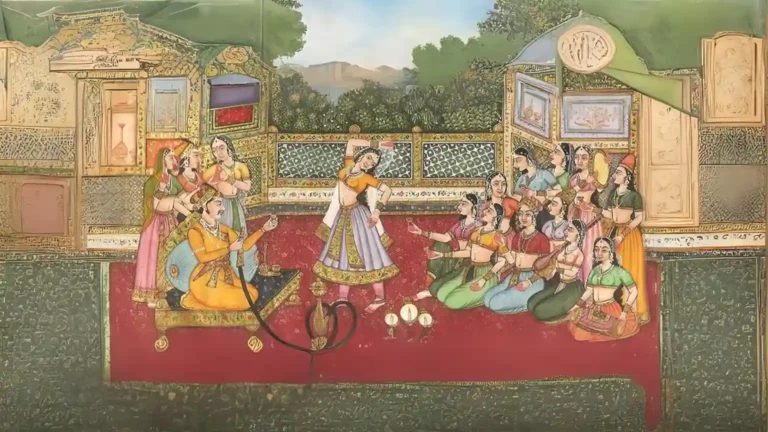Please Like the Blog and Share it for Maximum Reach
Table of Contents
Birthplace of Sri Madhvacharya
Sri Madhvacharya hails from the land of Karnataka, from Udupi proper. He was perhaps the most practical thinker in the field of Vedic philosophy.
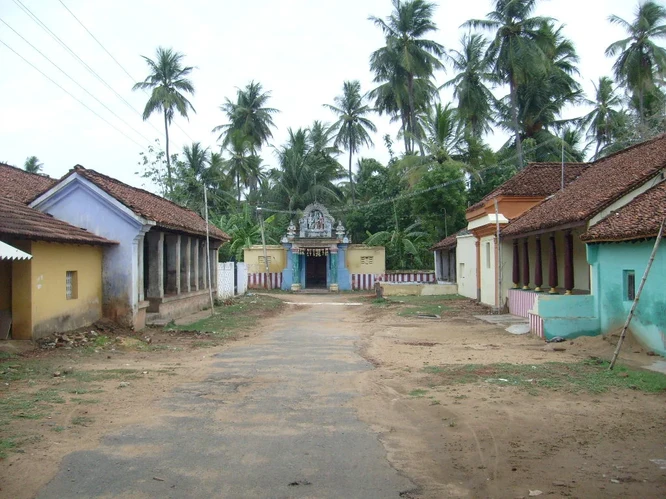
Belle is a small hamlet about 8 kilometers south of Udupi. The hamlet of Belle includes within it a place called Paje. Rocks and hillocks abound the tiny hamlet. Sri Madhvacharya belonged to this unknown and unheard place called Paje.
Shortly following the discovered divinity of Sri Madhvacharya Paje gained recognition as “Paje-Kshetra”.
When was Sri Madhvacharya born?
Sri Madhwa appeared 744 years ago. It was the Vijaya Dashami day that followed Navratri, the festival of Devi. It was the waxing moon of the year called Vilambi (1238 CE), a day of natural festivity in the whole of Bharatha Desha.
On that afternoon was born the Acharya of the World, Sri Madhwa, in this tiny hamlet in the state of Karnataka. The newborn got the name Vasudeva.
Sri Madhwa’s parents
Sri Madhwa’s parents belonged to the family of Nadillaya. The mother tongue of this family was Tulu, a language spoken by the inhabitants of Southern Karnataka.
Nadillaya Narayana Bhatta was Madhwa’s father while Srimati Vedavati was his mother.
Sri Madhwa’s early childhood
Vasudeva had a spiritual bent of mind, right from early childhood. The child was a perfect renunciant at heart. He was healthy and good at sports. As Vasudeva grew up, the family decided to send their son to the family way.
Naturally, which parents expected their son to marry? Vasudeva had larger plans. Vasudeva believed that the entire universe was his personal home.
For such a being, would it not be selfish to set up another home inside a larger one? This would be divisive by all means. Vasudeva was 11 years old when he left his parents’ home.
Sri Madhwa’s Sannyasa and early debates
He took initiation into the monastic order from Achyuta Prajna. Vasudeva then received his initiated name “Purna-Prajna”. Forty days had passed after the Sannyasa ceremony of Vasudeva and then there was a debate between an Expert of Tarka (तर्क Logic) and Vasudeva who was now Purna-Prajna.
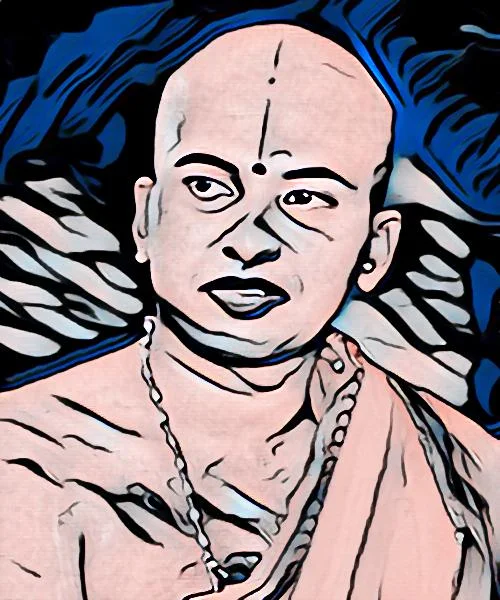
The Expert of Tarka had defeated stalwarts all over the country and yet Purna Prajna who was both younger than the Expert in age and experience accepted the challenge. It turned out that Purna-Prajna defeated the scholar-expert within no time.
The Guru of Purna Prajna was so happy that he announced the consecration of Purna Prajna as the head of the Empire of Vedanta, the Vedanta Samiti.
Purna Prajna has got the title Ananda-Tirtha since. Sri Madhwa was also totally opposed to the Charvaka View of Life.
Test your Alignment with the Spiritual Subject Matter (only 7-8 Questions)
The scores generated in this Quiz are relative. There are no right or wrong answers. A percentage towards 100 indicates that you are more aligned to the overall subject matter.
Sri Madhvacharya defeats Buddhist scholars
Two Buddhist scholars visited Purna Prajna. One of the scholars belonged to the Vedic Class earlier. The Vedic scholar had the name Vadisimha.
But he had to accept defeat in a debate with another Buddhist scholar, Vadisimha had to embrace Buddhism, following his defeat. Now the two Buddhist scholars came to see Purna Prajna. Here too Purna Prajna defeated the Buddhists within no time.
Sri Madhvacharya’s framework of “Tattva-Vada”
In course of time Vasudeva who had two names, Purna-Prajna and Anand-Tirtha became renowned as Madhvacharya. This was his most popular name. This name gave him the most reputed iconic status.
Sri Madhvacharya visited the southern states even when he was in his teens. He visited pilgrimages like Anantasayana, Kanyakumari, Ramesvara, and Sriranga.
The Acharya preached His personalized understanding of the Vedas known as “Tattva-Vada” wherever he went. Sri Madhvacharya expressed his final conclusions of Vedic philosophy within his philosophical framework of Tattva-Vada.
“Tattva-Vadins” followed the doctrine of Sri Madhwa. He presented the ancient Vedic teachings in the light of the new framework, which was fresh and close to the life of the common man.
Thereafter he challenged the age-old Vedic practices which had lost their ritualistic values over time and rendered deeper insights into the Vedic practices.
Sri Madhwa Presents the Shastra with Clarity
Sri Madhwa worked hard to eradicate superstitions. He demarcated little understood, seemingly mixed up and muddled sections of the Shastra, and thus corrected wrongly propagated ideas that unfortunately qualified as Vedic Truths.

He did all that he could to remove the chaff of impurities that mixed with Vedic practices. So-called custodians of culture and old beliefs challenged and threatened Sri Madhwa.
But he remained resolute and worked his way through, in the light of Truth and crystal clear logic.
Sri Madhvacharya writes Bhashya on Bhagavad Gita
Sri Madhvacharya surged ahead with his tours around the country, trying to spread the pure light of Vedic knowledge. Therefore he dedicated and surrendered himself to the cause of the Absolute Truth.
So, he made a firm resolve to eradicate the shadow of superstition that was eclipsing the efficacy of Vedic practices and the idea of the Absolute Truth. In that regard, he accomplished the writing of a commentary (भाष्य bhasya) on the Bhagavadgita Sri Madhvacharya now turned Northwards.
Sri Madhvacharya visits Veda Vyasa at Badri Dhama
He resurrected the Vedic religion and spread pure knowledge far and wide. Shri Badrinath Dham beckoned him; he found it irresistible to avoid it.
He wished to meet up with Sri Veda-Vyasa at his hermitage.
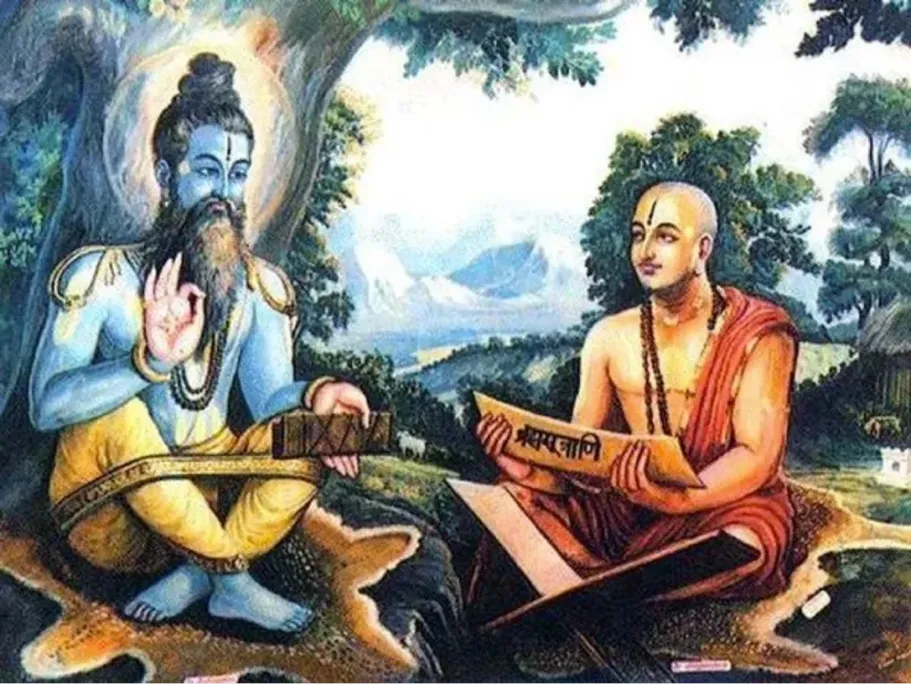
Also, Sri Madhwa was keen to visit the Nara-Narayana Kshetra at Badri Dhama. He subsequently reached Badri.
There he observed a vow of strict silence for 48 days, bathing in the holy Ganga. And then he set out alone towards Vyasa-Badri, his cherished destination.
People in the Madhwa Parampara believe that Sri Madhwa met up with his original preceptor Sri Veda-Vyasa, entering a subtle zone within Badri Dhama (बद्री धाम).
He obtained the divine sage’s signature on the copy of his commentary on the Bhagavad Gita.
Thus making his commentary the most authentic commentary on the Gita to have been ever written since it contained the signature of the original author of the Bhagavad Gita who is Veda Vyasa himself.
Please Like the Blog and Share it for Maximum Reach


